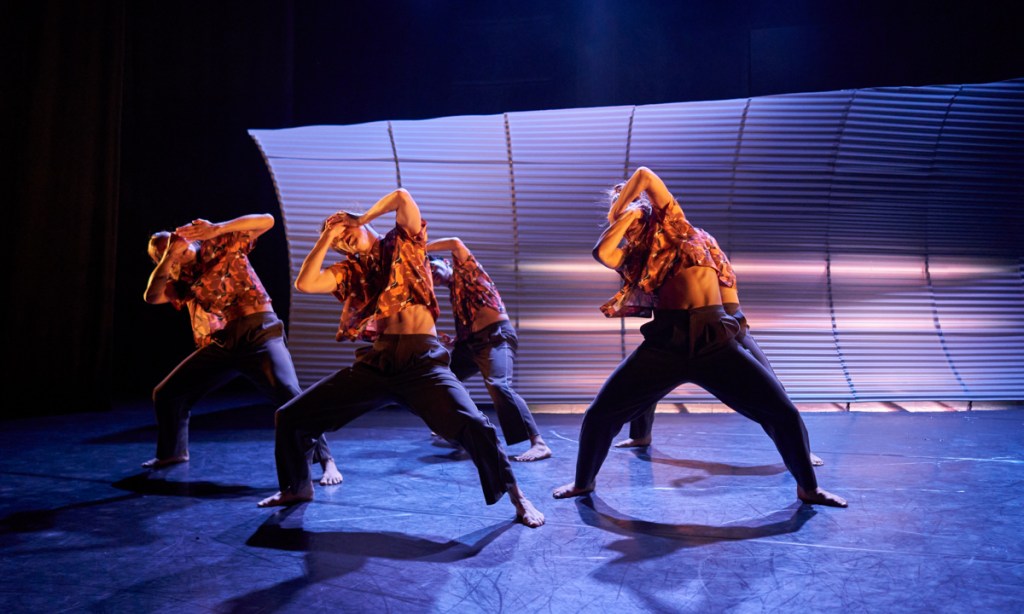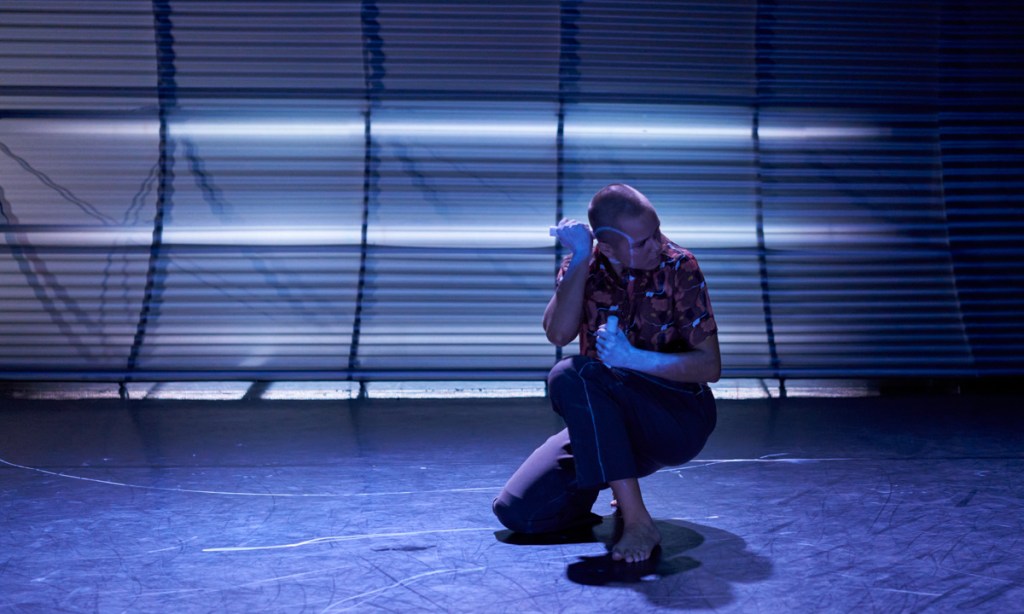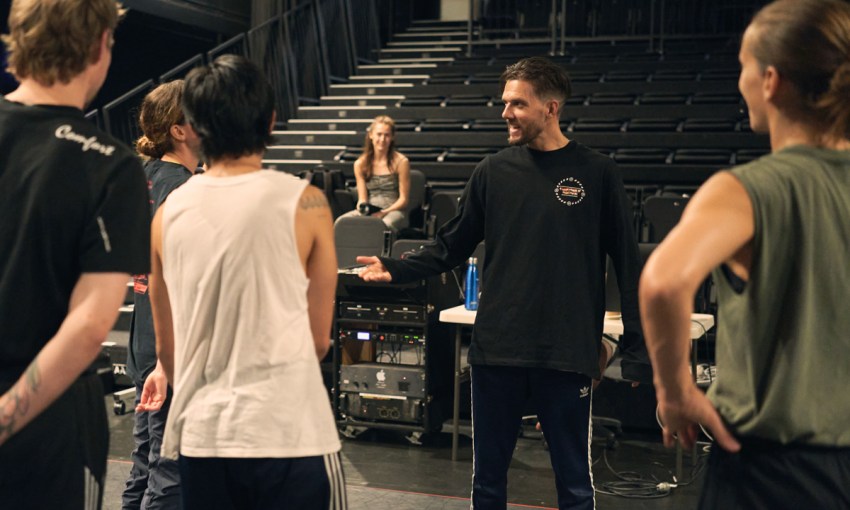Wiradjuri man Daniel Riley's path to becoming the first First Nations artistic director of Australian Dance Theatre began with a chance meeting with its founder as a teenager. With ADT's future in his hands, he plans to make work that "could only happen here".
Full circle
When I meet Wiradjuri man Daniel Riley in the Australian Dance Theatre offices at The Odeon in Norwood, rehearsals for SAVAGE, Daniel’s debut work as artistic director of ADT, are in full swing.
SAVAGE
21—25 September
Dunstan Playhouse, Festival Theatre
Festival Drive, Adelaide 5000
Tickets and more info
He sits opposite me, biting into an apple (his lunch, but it will remain half-eaten by the end of our chat) and looking simultaneously exhausted and invigorated. He offers me a drink (a water, please) and apologises for the delay.
Understandably, there are a million things to think about in the run-up to the premiere, a hundred choices to make, not just about the show, but about the company as well.
“[SAVAGE] is the biggest work I’ve ever made. The most amount of time I’ve ever had. The most amount of bodies. The biggest kind of design I’ve ever worked with. So there is a lot of moving parts,” he says. “There are some days, you know, I feel like this is too much. How am I going to wrangle this? But like any artist, we all have our days of doubt, right?”
Daniel is like this – candid and humble, despite his obvious talent. He speaks with a rapid but considered cadence, his voice soft but not without authority. He has a certain puckish quality about him as well. When we meet, he’s wearing shorts and thongs, tattoos visible under his long-sleeve shirt. A skateboard hangs from the wall in his office.
Despite this, there’s an intensity to Daniel, the type that comes with clear vision and focus, and from decades of experience. It’s that experience that’s guiding him through what is, as he says, a major undertaking. As well as choreographing SAVAGE, Daniel is performing alongside the ADT ensemble and nine students from the graduating year of the BCA in Dance at Flinders Uni/AC Arts. All of this while learning a lot about his own processes and what it takes to run an organisation of ADT’s size and stature. Daniel is quick to acknowledge the “incredible support from associate director Sarah-Jane Howard,” as well as the entire company.

Daniel Riley. This image: Jonathan van der Knaap
Daniel’s love for dance – initially as a tap dancer – began as a nine-year-old. He recalls an image of his sister’s dance studio and seeing all the girls dancing.
“And then the next image I have in my head is the same image from a third person perspective but there’s one boy and it’s me,” he says. “So I have this really vivid memory of being the only one.”
He’s less certain why he was drawn so keenly to dance – it might have been because Tap Dogs was hugely popular at the time. “My heroes, these dudes in flannelettes and boots,” he says. But there was something in the physicality, too, the way movement became expression, that drew Daniel in.
Being the only boy dancing meant being singled out, especially as a smaller boy who “hit puberty late”. There were times, early on, when he would get hassled at school and question whether dancing was worthwhile.
But when Daniel began to connect more deeply with his identity as a Wiradjuri man from Western New South Wales, it brought a moment of clarity. He realised “cultural men dance”.
“We dance because that’s how we tell stories. That’s how we mourn, that’s how we grieve. It’s how we celebrate. It shifted the gaze of it for me at the time,” he says. “In terms of contemporary dance, we’re bare foot. It’s the closest form that connects me to my identity. I just counted down the hours in school to go to dance class. And I spent all Saturdays and Sundays in this dance studio at [youth dance company] Quantum Leap.”
Piri Eddy is The Mill’s Writer in Residence.
This work was contributed through The Mill’s writer-in-residence program.
For more information on the program, see here.
There was another significant moment of connection for Daniel in those early days. When he was 13, his family moved to Canberra. Daniel’s father, working at Queanbeyan South Public school, met a dancer running some in-school dance programs who had mentioned a new youth dance theatre company – Quantum Leap – starting up in Canberra. The dancer, as it turned out, was Elizabeth Cameron Dalman, the founder of Australian Dance Theatre.
“I had no idea that that incredible old lady who introduced me to contemporary dance was the founder of this company. I had no idea about ADT, either… about the incredible legacy of the company that she had started in 1965,” Daniel says.
When ADT toured through Canberra a few years later, Daniel realised he had a connection to the company. He says the “rawness of that style of contemporary dance really blew me away”.
This was also around the time Daniel saw Bangarra Dance Theatre for the first time. “That was the moment when I was, like, ‘Wow, that’s my culture. They’re using [dance] to connect to their identity’,” he says. Daniel knew then he needed to go to Bangarra. “That’s where I can explore my identity,” he recalls thinking.
Determined as ever, that’s what Daniel did, dancing and crafting an impressive body of choreography for, among others, Bangarra, QUT, Third Row Dance Company in the UK, and Sydney Dance Company.
Twenty years later, give or take, Daniel finds himself, in some ways, back where it all started. It’s like coming full-circle, CityMag suggests, and Daniel agrees.
“I speak to Elizabeth a lot. Last time I saw her, she was talking about spirals; that we both worked in these spirals and our spirals interconnected when I was 13,” he says. “And we’ve gone on [to do] our own things and now we’ve interconnected again. I’ve become custodian of this organisation that she founded.”

‘SAVAGE’ rehearsals
In June of 2021, Daniel became the first First Nations artistic director in ADT’s history, and the first in any small to medium sized professional dance theatre company in Australia. It’s a significant and seismic achievement and not one without immense pressure, not just to succeed personally, but also to be a caretaker for other First Nations artists and their stories.
New here? Sign up to receive the latest happenings from around our city, sent every Thursday morning.
“I feel a great responsibility for the First Nations people in the building… for any First Nations artists that we commission or that we work with because I’m inviting them into a space that hasn’t historically been a space for First Nations people or culture or cultural practice,” he says.
This responsibility weighs heavily on Daniel, but he acknowledges that others have paved his way. Wesley Enoch, for instance, was the first First Nations artistic director of a major theatre company at Queensland Theatre. “I look at him and go, ‘Okay, it can be done’,” he says.
But it’s clear to Daniel that culturally, in these types of organisations, the industry is far behind where it should be, especially when culture, art, and storytelling are at the root of how First Nations people connect to their identity.
“Blackfellas should be in all seats of leadership,” he says.
Daniel’s position at ADT offers the dancer a significant opportunity – for evolution, or even revolution. Given his humble nature, he seems more inclined to the former
“I’m not interested in tearing the walls down and burning it to the ground to rebuild it. I’m more interested in the shapeshifting nature and how the company can continue to evolve,” he says.
“I have a moment here to say, ‘It can be done a different way to still achieve the same outcome.’ For me, that starts in the studio. How are we making work?”
The answer to that, primarily, is in elevating many voices, not just Daniel’s, and creating shows that “can only be made here [on Kaurna country], not making work that looks like it’s been made by a European company,” he says.

Daniel’s vision isn’t simple, not one that can be achieved in a three-year contract. Luckily, he’s already thinking long-term – a decade or more into the future.
“I’d like ADT to be recognised as one of the major performing arts companies of the country, to be leading the way and have a really solid cultural bedrock. That we are ingrained in Adelaide and everyone in Adelaide knows ADT,” he says. “And that relationship with the Kaurna community, as well, is strong.”
There’s no part of us that doesn’t believe fully in Daniel’s vision. He has a purposeful poise, an affable but determined air, which we’re sure will bring people along with him. He has to. It is necessary when breaking ground, to ensure that any change he instigates will last.
It’s daunting, too, that weight of responsibility. The pressure to succeed, be a caretaker, a guide. But Daniel can’t imagine doing it anywhere else.
“I’m here and I’ve never felt more strong that this is where I’m meant to be,” he says. “Elizabeth and I connected all these years ago for a reason, and maybe this is that reason, that we started our connection, and then by some way, shape, or form, or some ancestor looking out for me saying, ‘That’s where you need to be, that’s what you need to be doing’.”
“So I’m just going to ride that as hard and as fast as I can,” he laughs.




